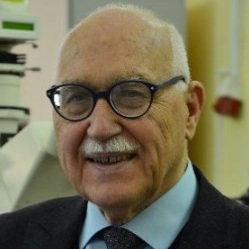Feature Paper in Optical and Photonic Materials
A special issue of Materials (ISSN 1996-1944). This special issue belongs to the section "Optical and Photonic Materials".
Deadline for manuscript submissions: closed (10 September 2023) | Viewed by 32552
Special Issue Editor
2. Laboratory of Laser Molecular Imaging and Machine Learning, Tomsk State University, Tomsk, Russia
3. А.N. Bach Institute of Biochemistry, FRC “Fundamentals of Biotechnology”, Moscow, Russia
Interests: biological and medical physics; biophotonics; biomaterials, laser spectroscopy; laser and optical systems; optical and laser measurements; nanobiophotonics; terahertz dielectric spectroscopy and microscopy; LIBS; phototherapy
Special Issues, Collections and Topics in MDPI journals
Special Issue Information
Dear Colleagues,
Optics and photonics are sciences and technologies based on the interaction of photons from X-ray to ultraviolet, visible and infrared, and further to terahertz range with various materials. Optics and photonics require modern materials to create new light sources, light delivery devices, mirrors, fiber optics, etc. At the same time, optics and photonics provide precision processing of all types of materials using well-known and widely used technologies such as photolithography, laser printing, and laser engraving.
Biomedical optics and biophotonics, as a rapidly developing interdisciplinary field of research and innovative technologies, also requires special new biocompatible materials for implants, tissue phantoms, labeling of pathological cells, printing cells and organs, delivering light to internal organs, etc.
This Special Issue highlights and discusses current trends in optics and photonics, and interaction of optical radiation with various materials, including nanomaterials and biological materials, with the aim of obtaining novel smart materials and medical technologies.
It is my pleasure to invite you to submit your manuscript for this Special Issue. Full articles, letters, tutorials, and reviews are greatly appreciated.
Corresponding member of the RAS, Prof. Dr. Valery V. Tuchin
Guest Editor
Manuscript Submission Information
Manuscripts should be submitted online at www.mdpi.com by registering and logging in to this website. Once you are registered, click here to go to the submission form. Manuscripts can be submitted until the deadline. All submissions that pass pre-check are peer-reviewed. Accepted papers will be published continuously in the journal (as soon as accepted) and will be listed together on the special issue website. Research articles, review articles as well as short communications are invited. For planned papers, a title and short abstract (about 100 words) can be sent to the Editorial Office for announcement on this website.
Submitted manuscripts should not have been published previously, nor be under consideration for publication elsewhere (except conference proceedings papers). All manuscripts are thoroughly refereed through a single-blind peer-review process. A guide for authors and other relevant information for submission of manuscripts is available on the Instructions for Authors page. Materials is an international peer-reviewed open access semimonthly journal published by MDPI.
Please visit the Instructions for Authors page before submitting a manuscript. The Article Processing Charge (APC) for publication in this open access journal is 2600 CHF (Swiss Francs). Submitted papers should be well formatted and use good English. Authors may use MDPI's English editing service prior to publication or during author revisions.
Keywords
- Lasers
- LEDs
- Fibers
- UV
- Terahertz
- Nanostructured materials
- Plasmonic nanoparticles
- Tissues
- Tissue phantoms
- Optical Imaging
- Contrast agents
- Optical clearing
- Drug delivery
- Biomolecule self-assembly
- Exosomes
- Photoacoustics
- Optogenetics
- Implants
- Regenerative materials
- Molecule diffusion
- Tissue regeneration






